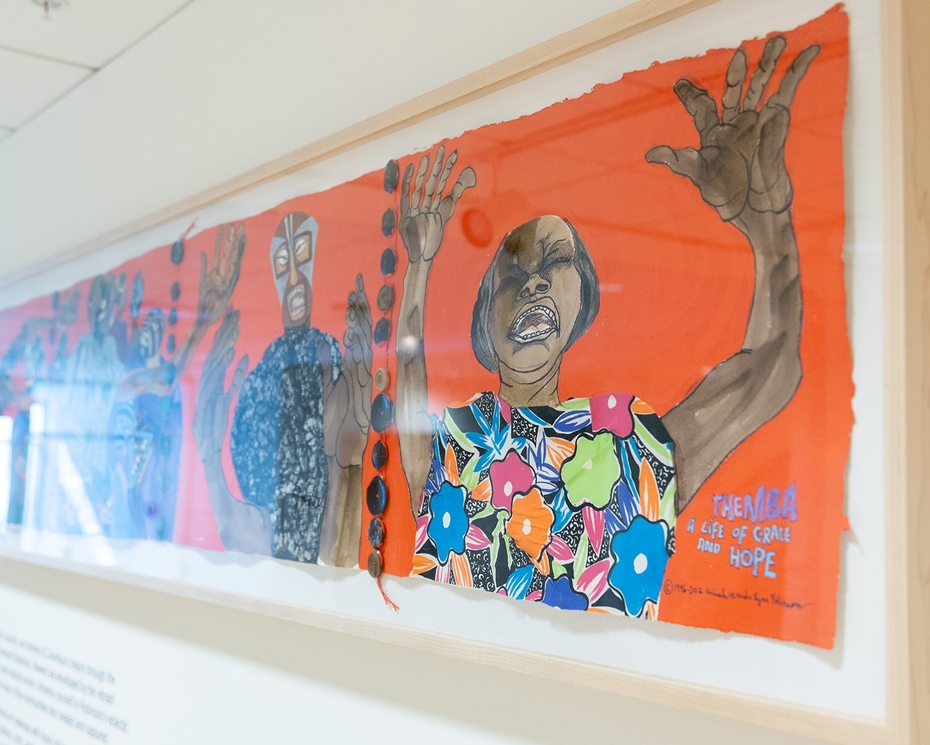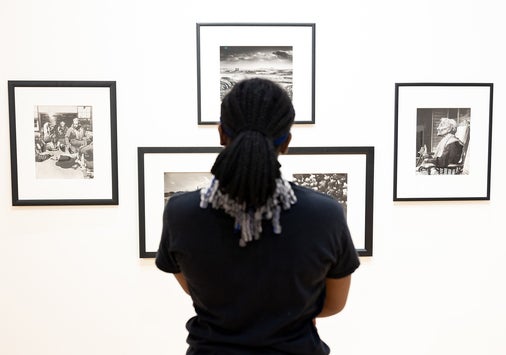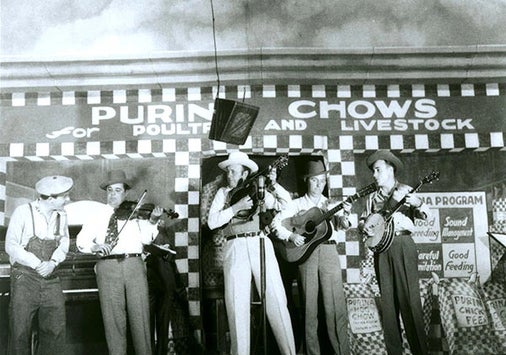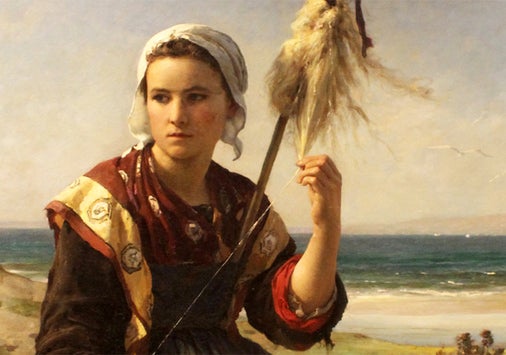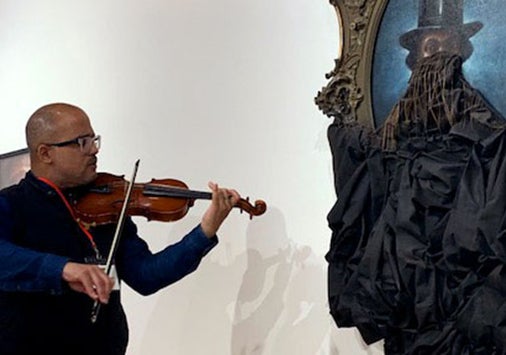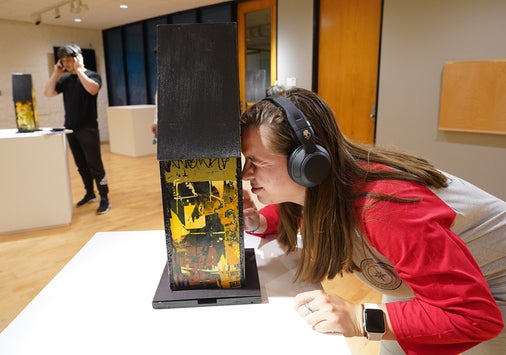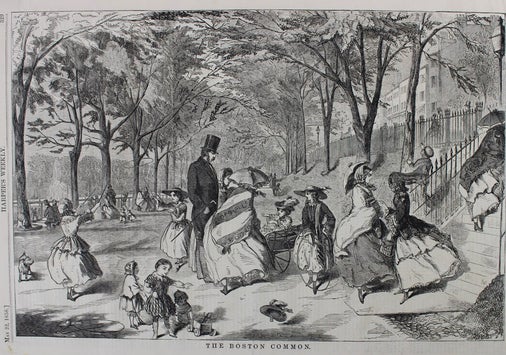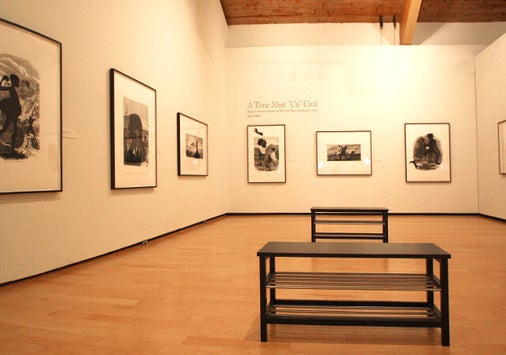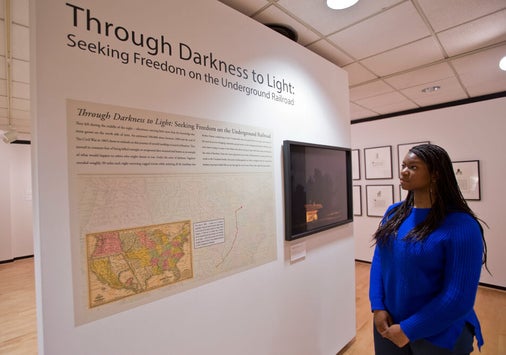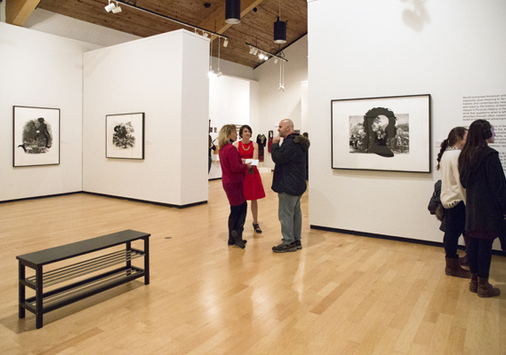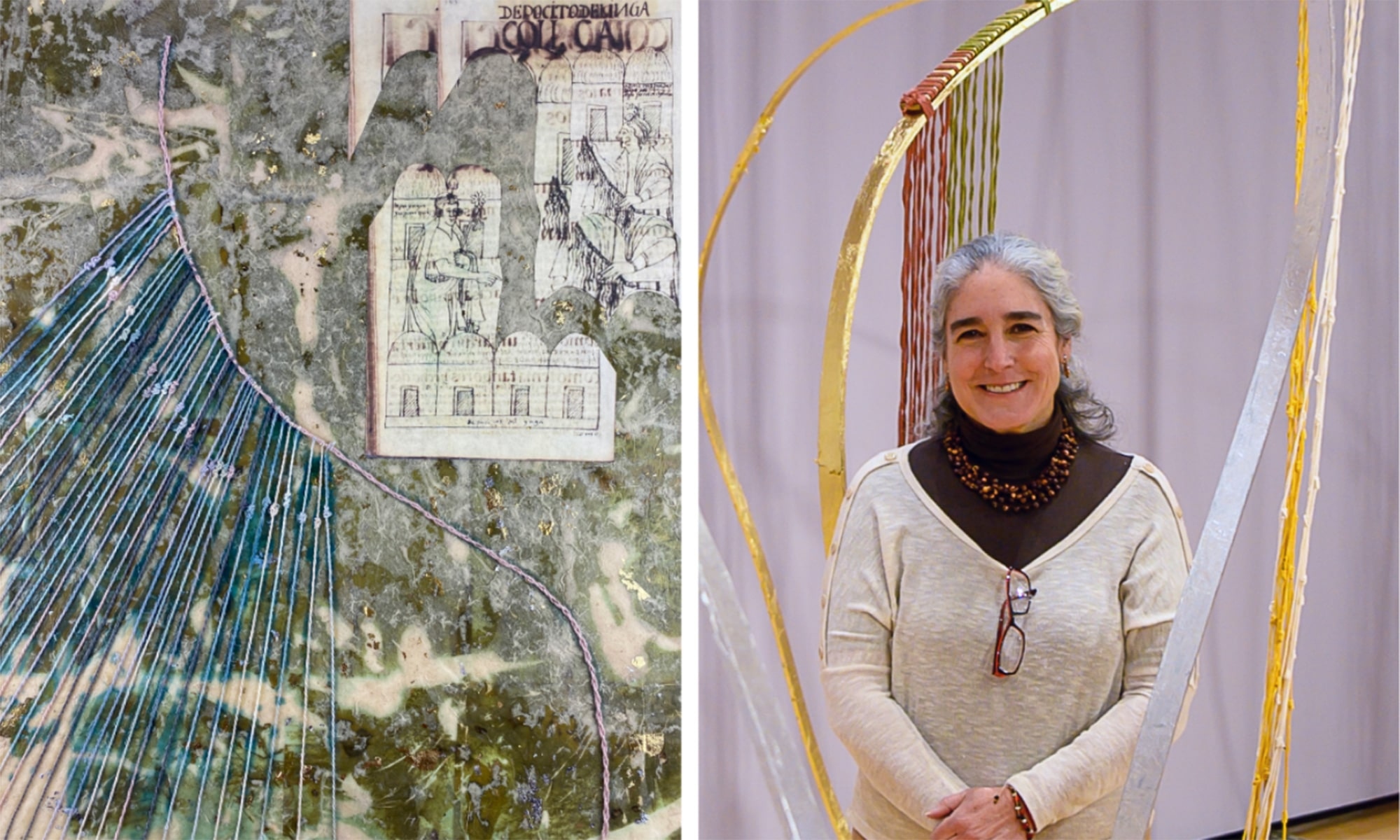
Mining the Qhapaq Ñan, an exhibition by studio art professor and chair Micaela de Vivero, is a commentary on the complex history of colonization, mining, and the impact they still have on the world today.
The Qhapaq Ñan, from Quechuan language for “Royal Road,” was a system of roads stretching in all directions from the Inka capital city of Cusco. Central to trade and communication, the road was later used by the Europeans to transport the gold and silver they took during their conquest.
Much of the inspiration for this exhibit came from Vivero’s once-in-a-lifetime trip hiking the Qhapaq Ñan. The segment she walked spans from roughly the city of Cusco to Machu Picchu. In a four-day journey, walking for 8-10 hours each day and reaching an elevation of 13,826 feet, she passed through many lesser-known Inka archaeological sites.
“Seeing these sites, I saw the heritage of a grandiose civilization that was unique from any other in the world,” she said.
Vivero uses the ancient yarn-based communication system of Khipus, as well as images from the book Nueva Coronica y Buen Gobierno, to provide a window into the life of the thriving Inka society.
“I think it is important to understand the history and circumstances in all parts of the world to really be an understanding citizen,” Vivero said. ”This is my contribution to that understanding.”
Mining the Qhapaq Ñan will be on display in the Denison Museum until April 1. Museum hours are Monday through Friday, 9 a.m. - 3 p.m., or by appointment at 740-587-6255.
